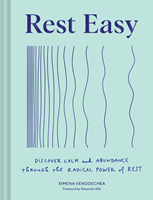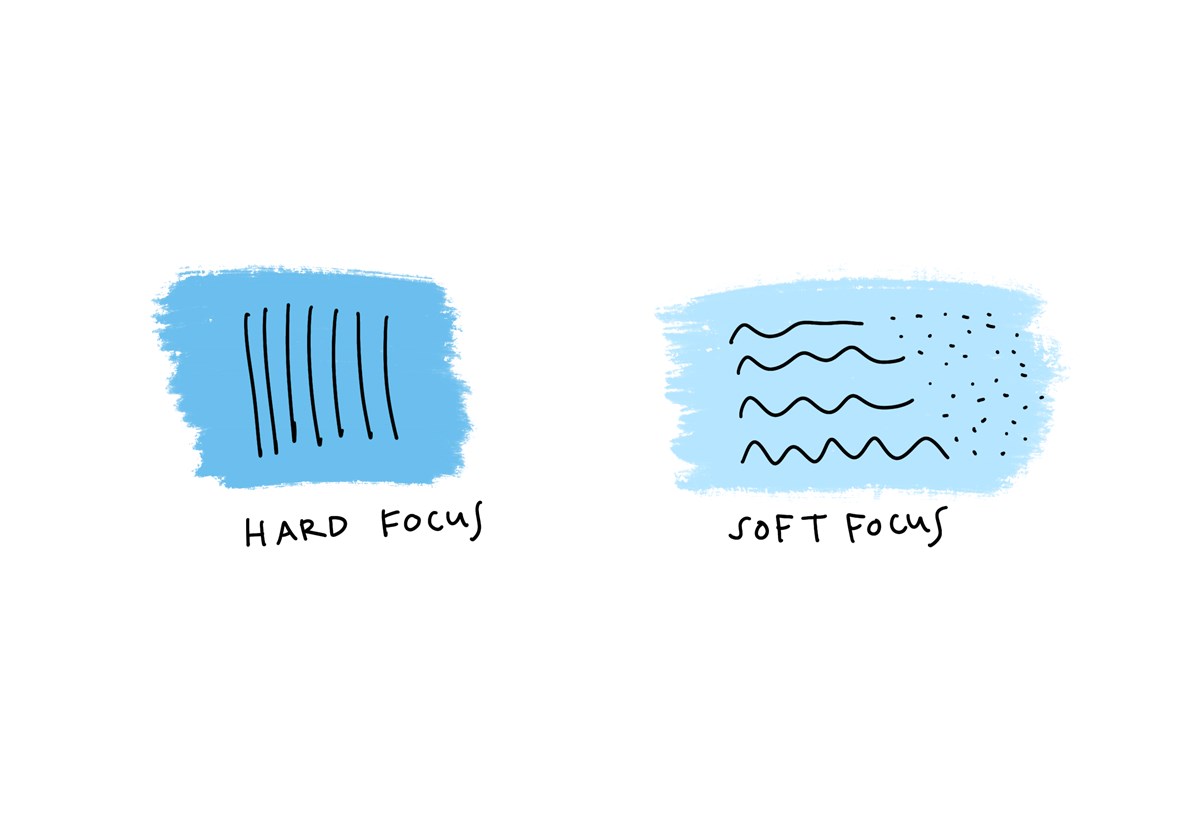An Excerpt from Rest Easy
November 16, 2023
Rest Easy offers a simple way to provide gentle encouragement and support to those experiencing burnout.
 Rest Easy is a book that aims to counteract the negative effects of burnout culture by inviting readers to discover the transformative power of rest. Written by rest expert Ximena Vengoechea, the book explores various methods for relaxation and renewal, including movement, sound, visualizations, journaling, time in nature, meditative activities, and more.
Rest Easy is a book that aims to counteract the negative effects of burnout culture by inviting readers to discover the transformative power of rest. Written by rest expert Ximena Vengoechea, the book explores various methods for relaxation and renewal, including movement, sound, visualizations, journaling, time in nature, meditative activities, and more.
In the following excerpt, Vengoechea discusses how practicing soft focus can help alleviate the stress of our daily lives.
◊◊◊◊◊
Focus
Growing up in New York, I went to museums often. As a child, I’d wander the galleries with a little sketchbook in my hand. When I found something intriguing, I’d stop and sit with it for five, ten, fifteen minutes. As I looked, I sketched—paintings, drawings, sculptures, found objects, conceptual art. The more I stayed with each artwork, the more I started to make meaning of them. I lingered on the impossibly thick paint strokes, the perfect sheen of a sculpture, and the puzzle of a found object. I began to see that what appeared to be a single color from a distance was, upon closer inspection, actually achieved through half a dozen colors. (I also loved hunting for the artist’s signature—a sort of game I played to keep me engaged with every piece.) This process could be calming or energizing, depending on the kind of art. Years later, I still find it meditative and enthralling.
Most of us walk through life with scattered attention and distracted minds, pulled by technology, to-do lists, and multitasking. Yet with focus, we can tame the stress and overwhelm that usually accompanies these activities. Whether we aim our attention on art, nature, or even a good meal, we can find calm simply by focusing. Giving something our undivided attention, if we know where to focus it, can be pleasantly absorbing and mentally restorative. Here are some suggestions for how to direct your attention to find peace of mind.
Find Flow
As a child, I didn’t have the words to describe why my museum experiences were so restorative; it wasn’t until adulthood that I understood that I was finding “flow” in sketching. Flow, as defined by psychologist Dr. Mihaly Csikszentmihalyi, is the experience of becoming happily lost in an activity. When we are in flow, we are completely absorbed in the task at hand. These tasks are usually ones people enjoy and find meaning in, and which are both challenging and doable. We can find flow in writing, painting, ceramics, music, and other creative pursuits, along with sports and even work we find meaningful. When we are in flow, our ego—the inner critic and inner monologue—tends to quiet. The key to finding flow is focusing on one thing at a time; there is no room for flow if we are multitasking or distracted.
To practice finding flow and quiet your mind, carve out thirty to sixty minutes of uninterrupted time—time you won’t be interrupted by others, or yourself—and find a meaningful activity to get lost in. The right activity will be challenging yet achievable. (Too easy an activity can leave us bored, while too difficult an activity can leave us stressed.) I call these “stretch” activities because they require us to gently stretch our limits, without being impossible to do. (Drawing was achievable, but also challenging for me.) What might you find flow and relaxation in?
Practice Soft Focus
When we are not in flow, paying attention can feel forced. (Just think how hard it can be to stay attentive during a webinar, meeting, or even family dinner sometimes.) It takes concerted effort to voluntarily direct our attention on something and keep it there.
Thankfully, looking at nature gives us a break. “Soft focus” is an open, soft, informal monitoring of the environment, and it is easily engaged when we focus on the natural environment. Because the brain is familiar with (and, indeed, evolved to recognize) organic shapes and forms, it is engaged but not overtaxed. This kind of focus is involuntary and effortless. According to attention restoration theory, paying attention to nature doesn’t drain our brain resources and is actually restorative. When practicing soft focus, we may experience awe, empathy, and calm.

Before you shoot off another email, take a moment to simply look at the leaves of a nearby tree fluttering in the wind. If you are lucky enough to live or work by the water, stop to enjoy the rhythm of the waves for a minute. When you are feeling stressed or simply want a mood boost, pause to take in the sunset or watch the clouds drift by. These small moments can all elicit positive feelings of awe. Later, we’ll learn more about how being in nature—not just looking at it— can further activate our rest response.
Take a Micro-Moment of Rest
Observe the World Around You
Whether you are in nature or a city, a museum or a supermarket, observing your surroundings can be a helpful way to find peace of mind. Take a moment now to carefully notice the world around you. Notice the sounds, textures, movement, and interplay of objects and people nearby. Focus on a specific moment, scene, or place and see what you can discover. What happens when you use all five senses to observe the world around you? What new things do you see and feel?
From Rest Easy: Discover Calm and Abundance through the Radical Power of Rest, by Ximena Vengoechea. Published by Chronicle Books, LLC.


